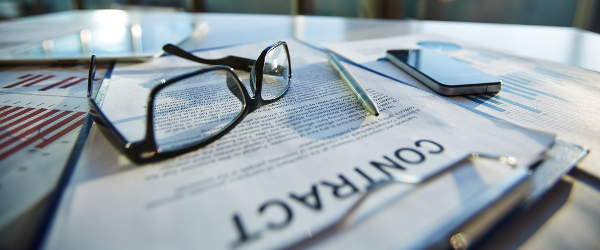
Blockchain is a distributed ledger system. A ledger resolves transactions. Blockchain does the same on a digital platform which keeps a permanent unalterable record of the transaction.
What this means is that having a secure, unchangeable record of an agreement between two or more parties secures the transaction. It can be made legally binding. If a transaction can be made legally binding it on a digital platform then its application can be endless.
One could buy a currency, sell a house, pay for a service, engage a professional, pretty much anything can be transacted using Blockchain.
Financial services firms operate on trust. I want to sell a particular amount of something from a particular asset class, say 10 year UK Government Bond or 1,000 ozs of gold. If I use Blockchain to transact a deal then the buyer tied in to the deal because there is a permanent unalterable record that the deal was done.
As an explanation of how it works Bitcoin.org says: "To be confirmed, transactions must be packed in a block that fits very strict cryptographic rules that will be verified by the network. These rules prevent previous blocks from being modified because doing so would invalidate all following blocks. Mining also creates the equivalent of a competitive lottery that prevents any individual from easily adding new blocks consecutively in the block chain. This way, no individuals can control what is included in the block chain or replace parts of the block chain to roll back their own spends." Source www.Bitcoin.org
Another explanation comes from Barclays Bank’s Simon Taylor who issued a paper on the potential of Blockchain in the financial markets and other areas.
"Blockchain technology, which underpins bitcoin, has a number of interesting attributes. There are two main types of Blockchain Technology 1. Unpermissioned 2. Permissioned (sometimes ‘distributed ledgers’ or ‘replicated shared ledger’) An Unpermissioned blockchain is an open, decentralised ledger which records the transfer of value. Every transaction is cryptographically chained to the previous transaction. The result is a permanent, immutable and verifiable record of truth that everyone can see. This is useful when no central entity is available to verify a transaction.
Unpermissioned Blockchains are "censorship resistant". Nobody can edit them, meaning if you want to record a statement of fact with your name on it (for example; "Alice would like to pay Bob £1" or "This is my last will and testament"), Unpermisioned blockchains are a great place to do this A Permissioned blockchain technology is often far more appealing to enterprise and financial services. To understand this we need to explore one of the biggest problems with financial services and industry; the cost of paper.
In recent years, there have been many different initiatives intended to remove paper from the economy. However, in many cases the new technology has simply recreated old processes in a new way, or has led to solutions which continue to rely on paper. For example, the process of signing a cheque was digitised by creating a cheque guarantee card, followed by a PIN card – but the new model continues to work on the same hub and spokes model that the previous cheque system had used. In other cases, such as tenancy agreements, there is a continuing need for a piece of paper that will hold up in court. A Permissioned blockchain technology could, in contrast, replace certain paper-based processes with processes which are genuinely different, because of the way many of these technologies work….If we could rely on maths to "sync" the truth between us all, we could cut out a lot of wasted back and forth paper from the likes of: – Trade Finance – Land Registry – Social Welfare – Insurance – KYC and AML To name just a few.
Read the paper.
Recent developments include Deloitte’s announcement that it will set up a Blockchain lab. Deloitte is launching a Financial Services Blockchain Lab as the business advisory firm develops its fintech initiative ‘The Grid’.
The EMEA lab will be based in Dublin and house a team of 50 developers and designers once it has been built up over the next 18 months.
The firm has already made a number of moves around the distributed ledger technology by partnering with five companies BlockCypher, Bloq, ConsenSys, Loyyal, and the Stellar Development Foundation.
Deloitte is developing 20 blockchain-related prototypes in areas such as digital identity, digital banking, loyalty and rewards, and cross-border payments. Work is also underway to develop prototypes for the investment management space and insurance sectors.
The fallout for the securities industries was covered in a recent paper from the London School of Economics called: Holding, clearing and settline securities through blockchain technology.






